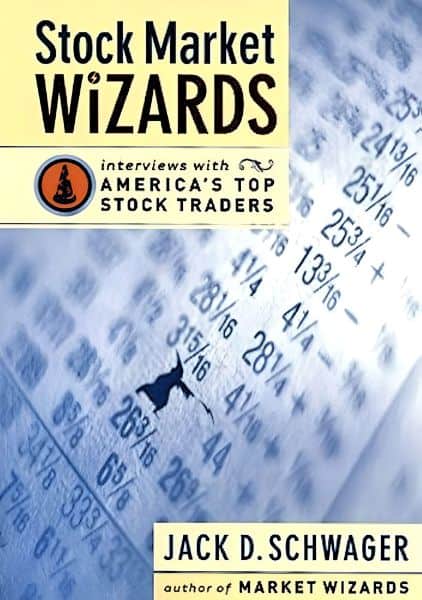Trading in the financial markets can be an exhilarating and potentially lucrative endeavor. To succeed in the markets, you need a clear strategy that can adjust to changes.
The Joe Ritchie Trading Strategy is a popular and well-regarded strategy that has gained attention.
Joseph Ritchie is a seasoned trader with decades of experience in the financial markets. He founded Chicago Research and Trading in 1977, trading mainly options and commodities. He honed his skills and knowledge through extensive research, analyses, and hands-on trading.
Joe Ritchie is particularly renowned for his quantitative approach to trading, where he heavily relies on mathematical models to make informed decisions. This systematic approach allows him to accurately analyze market trends and risks, setting him apart in the trading world.
According to TipRanks, copying Joe Ritchie’s trades and holding each position for one year would yield a return of over 56%. This consistency speaks volumes about the efficacy of his trading strategy, which is a blend of analytical rigor and market intuition. It’s a strategy that both novice and seasoned traders can adopt to navigate the complex world of financial markets effectively.
In this blog, we will explore the details of this strategy. We will learn about the principles, techniques, and tools that make it powerful in trading.
Foundation of Joe Ritchie’s Strategy
The Joe Ritchie Trading Strategy uses technical and fundamental analysis to understand the markets. Technical analysis involves studying price charts, patterns, and indicators to identify potential trends and reversals. Traders using the strategy utilize various technical indicators, such as:
- Moving averages: identifying trends and potential reversals by analyzing the relationship between different moving averages to determine buy or sell signals.
- Fibonacci retracements: identifying potential support and resistance levels to help determine optimal entry and exit points.
- MACD (Moving Average Convergence Divergence): to understand the change in momentum by analyzing the convergence and divergence of moving averages. This indicator gives traders insights into market sentiment and helps them make more informed trading decisions.
- RSI (Relative Strength Index): to identify overbought and oversold conditions, which can indicate potential reversals in the market.
- Support and resistance levels: to see areas where the price has historically had difficulty moving beyond.
While technical analysis looks at charts, fundamental analysis examines the reasons behind market movements. This analysis involves studying economic indicators, news events, and company earnings reports. You’d also consider other important things, such as supply and demand dynamics in the industry, the organization’s regulatory environment, etc., to figure out how much an asset is really worth. Then, you would use this information to predict what will happen to its price in the future.
For a deeper understanding of market frameworks, you can read more on George Soros’ Framework For Currency Markets.
Risk Management Principles
Joe’s strategy offers a robust framework for successful trading. He also urges traders to be aware of pervasive risks so that they can take steps to avoid them. Some common pitfalls to watch out for include:
- Lack of discipline: If you trade too much or make trades that don’t match your strategy, it can lead to bad decisions and more risk.
- Ignoring Risk Management: Failure to use risk management techniques, like stop-loss orders or proper position sizing, can lose you a lot of money.
- Lack of Patience: If you’re impatient, you might enter or exit trades too soon and miss profitable opportunities.
- Emotional Trading: Allowing emotions such as fear or greed to dictate trading your decisions can lead to irrational and impulsive actions.
- Failure to Adapt: Markets are dynamic and constantly changing. Failing to adapt the strategy to evolving market conditions can hinder success.
To explore more about risk management in trading, check out our detailed guide on Underwriting the Future using the Micron Technology Bull Case.
Joe Ritchie’s Advanced Trading Tools
So far, we’ve discussed the essential tool Ritchie employs in trading. However, you can incorporate specific advanced tools and tips to enhance your performance further.
For example, you can create a custom trading strategy using Scalping. Scalping is a technique that profits from small price changes in the market.
The goal is to make money fast by trading for a short time, often minutes or seconds. You can use order flow analysis or tick charts to identify short-term price movements and market imbalances. It requires high focus, discipline, and the ability to make rapid trading decisions.
Using advanced trading tools, however, requires managing risk and monitoring markets to reduce potential losses.
Additionally, you can add automated trading systems to the Joe Ritchie Trading Strategy by copying trades from professionals or creating your own algorithm. Ensure the algorithm follows the strategy’s principles and concepts, and test and optimize it carefully. Automated trading systems can make trading more manageable and diverse, even when you can’t watch the markets.
Identifying High-Probability Trades
Traders need to identify high-probability trades to use the Ritchie strategy successfully.
Swing trading is one approach that helps to achieve this. Swing trading involves holding positions longer, typically from a few days to weeks. This technique aims to capture intermediate-term price swings within a trend.
For swing trading, focus on critical support and resistance levels, trend reversals, and chart patterns. You can also study daily or weekly charts to analyze the market and spot breakout opportunities.
Swing trading requires patience and the skill to handle short-term fluctuations while focusing on the more significant trend.
Joe Ritchie’s Risk Mitigation Strategies
Managing risk is like navigating stormy seas. Having a plan and staying focused on your goals is essential. Ritchie has mastered this art. Let’s explore his strategies:
- Diversification Methods: Ritchie follows the ‘don’t put all your eggs in one basket’ principle, spreading investments across different assets. This way, he ensures that a weak performance from one doesn’t sink the entire portfolio.
- Hedging Techniques: Ritchie’s way of saying “no” to potential losses using derivatives like options and futures. It’s like an insurance policy covering your investments when the market takes a nosedive.
- Managing Market Volatility: Ritchie welcomes market volatility but uses stop-loss orders to make them advantageous, not dangerous.
Fine-Tuning Your Trading Approach
Success in trading is a continuous journey of learning and improvement. One of Joe’s philosophies is to never rest on your laurels. Each trade, win or lose, is an opportunity to sharpen your skills.
Read books and articles, attend workshops and seminars, and network with traders. Ask for feedback from other traders, mentors, and trading coaches. Doing this can help you track your progress and adjust your trading strategy accordingly.
Feedback facilitates customization; thus, it’s a critical step in discovering your unique trading style.
But remember, fine-tuning your approach isn’t about chasing every trend. It’s about defining and adapting your strategy to the market’s ever-changing landscape.
Conclusion
Ritchie’s success in trading is a testament to the importance of risk mitigation, diversification, and adaptability. His continuous improvement approach is a beacon for every serious investor.
Why does this matter?
Because trading isn’t a game of chance — it’s a strategic course of action. And with Ritchie’s insights, you’re not just playing; you’re playing to win.
So, what’s your next move? Will you let the unpredictable market sway your decisions, or will you seize control armed with Ritchie’s battle-tested strategies? The choice is unequivocally yours.
But remember, only the bold thrives in trading!
So, take the leap and fine-tune your approach. Adapt Ritchie’s wisdom to guide you to your trading triumph.
Ready to transform your trading style into a masterpiece crafted in the spirit of Joe Ritchie? Let’s join forces and craft a trading approach that reflects your unique vision.
At Macro Ops, our researchers and analysts can unleash the potential of your portfolio by tailoring it to your individual goals and aspirations.
Chat with us now, and let’s build the Joe Ritchie trading style that resonates with your financial ambitions.








